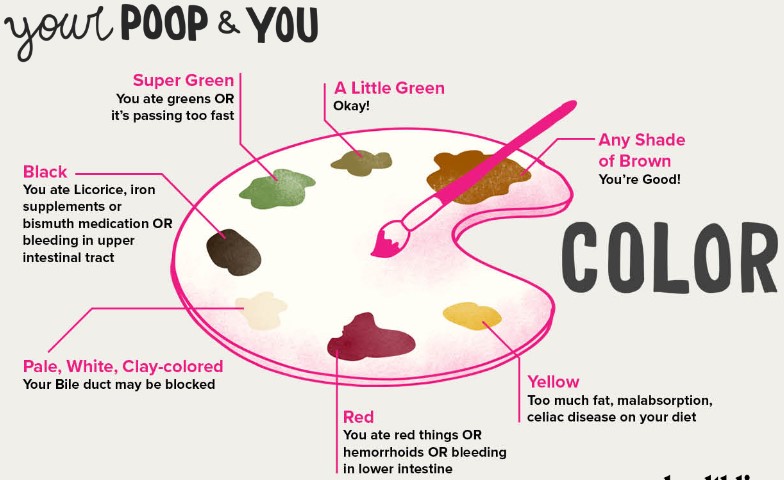If you notice your cat’s poop to be orange in color, there might be a number of reasons. A bacterial infection may be to blame, but it can also be caused by liver or gallbladder problems. This bacterial infection begins in the intestines and can travel up to the bile duct, where it can spread through the blood. Other causes of orange cat stool may include abdominal trauma or tumors. In either case, a vet can recommend supportive fluid therapy and antibiotics. It is extremely important to contact your veterinarian right away if you notice this coloration in your cat’s poop.
If you’ve ever scooped cat poop, you’ll know that some days it will come out a perfectly normal and expected shade of brown. Other times, the mid-squat kitty poo drop produces a surprise when the long awaited poo ball is suddenly an unexpected hue of orange that makes you wonder if there’s something wrong with your cat. This makes it easy to ask – How do I know whether my cats poop is normal? And while there are several different shades of poop that can vary widely depending on what your cat has eaten recently, there are also a few clear signs to look for to help you determine whether your cat’s poo color is OK or not.

Is your cat’s poop healthy
If your cat hasn’t been to the vet in a while, you might be wondering: “Is my cat’s poop healthy?” The good news is that it’s actually fairly simple to find out. Your cat’s poop has several telltale signs of its health. Its consistency, color, and shape all indicate different health issues. Healthy poop is usually dark brown in color, firm but not too hard, and devoid of blood or mucus.
If your cat is pooping in unusual colors or patterns, it may be a sign of liver or gallbladder issues. An orange stool may be caused by a bacterial infection that starts in the intestines and moves up into the bile duct. This infection then spreads through the blood. Other causes of a fatty stool color in cats include tumors, obstructions of the bile duct, and abdominal trauma. If you notice a change in your cat’s poop color, contact a veterinarian immediately.
healthy poo
What does healthy cat poop look like? Healthy cat poo is firm, cylindrical, and dark brown in color. It is firm to the touch, but not solid. It has a texture similar to that of modelling clay. The size of healthy cat poop corresponds to the size of your cat. The texture can be firm or a soft ball, depending on the breed. While many cats have slightly uneven poos, you should still be able to recognize it and scoop it out of the litter tray.
Most cats will poop once or twice a day, and it doesn’t have to be as frequent as humans. However, if you notice that your cat has been pooping multiple times a day, consult your veterinarian to rule out any health issues. Healthy cat poo should not smell particularly bad, and it should never be too strong or too light in color. You can even prepare homemade cat food at home. This is one way to get the nutrition and vitamins your cat needs without worrying about your budget.
Diarrhoea
If your cat is exhibiting symptoms of diarrhea after cat poo, it should be checked by a veterinarian. Often, it can be caused by a change in diet or by new ingredients in the cat food. If the diarrhea is severe and does not improve in a few days, you should seek medical attention from your vet. If the stool smells metallic, your cat may have a digestive disorder, such as parasites, or an improper diet.
A veterinarian can give your cat specific treatment, or a supportive one. Specific treatment involves determining the cause of diarrhoea and targeting it. Your cat should be fed a bland diet for at least 24 hours while he recovers from the incident. You should also be prepared to use antibiotics if your cat is experiencing frequent bouts of diarrhea. Diarrhoea after cat poo may be a sign of a more serious condition.

Smell
Smell cat poop can be a nuisance for both you and your feline friend. While it is a nuisance to have to remove smelly cat poop, it can also indicate a more serious health problem. Although it will take some patience, figuring out why your feline is releasing such pungent odors is worth the effort to keep your furry friend healthy. In this article, we will take a look at some possible causes and remedies for smelly cat poop.
Smelly poop is often the result of a poor diet. If your cat’s diet changes suddenly, you may notice smelly feces. Other causes of smelly feces include parasites, malabsorption disorders, and anal gland infections. As with all symptoms of illness, it’s best to seek veterinary treatment if your cat has bad-smelling poop.
The key to knowing what to look out for when it comes to your cat’s poo, is that you can’t. There are simply too many variables when it comes to feline digestion for you to accurately predict exactly what’s in your cat’s poop and why. What makes this natural process so difficult is that cats have evolved over time to be very good at hiding signs of illness or distress by keeping their illness as quiet as possible. Your best bet at checking your cat’s poop for signs of health problems is simply to read up on the symptoms of different illnesses in cats and check out what colour their poop should be. You’ll have much better luck with this kind of diagnostic technique than taking a guess at the shade.









